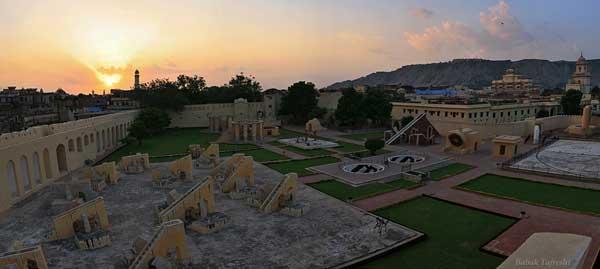Two Stargazing Landmarks Attain Star Status


Two historic hubs of scientific inquiry, the 18th-century Jantar Mantar Observatory in India and the 13th-century DengFeng Observatory in China, have been added to the list of UNESCO's World Heritage Sites.
The announcement of the additions came last week, during the U.N. body's annual meeting. Several natural sites also became newly named World Heritage Sites , and some were added or removed from another list that notes sites that are potentially endangered .
The Jantar Mantar complex in Jaipur, begun in the 1720s by a powerful Indian prince, resembles a giant's spilled box of Tinker Toys. The buildings themselves are astronomical instruments, and several of them are among the largest of their kind in the world. Two enormous bowl-shaped sundials items that would look at home in a modern-day skate park were designed so astronomers could climb inside to take measurements. The observatory's 19 buildings were completed in 1738.
Near DengFeng City in China's Henan province, the DengFeng Observatory complex includes 13 different monuments. The Yuan Dynasty observatory, built in 1279 near an ancient capital on Mount Songshang, is the most remarkable astronomical feature of the sprawling site. The brick tower, more than 30 feet (9.5 meters) tall and with sweeping stone staircases that wing out on both sides, was used to track the sun's noonday shadow over the course of the year, a key tool for calendar-making.
The selection of these sites by the UNESCO World Heritage Committee coincided with the publication of a joint study conducted by the International Astronomical Union and the International Council on Monuments and Sites, an advising body to the United Nations.
Their report outlines the wide variety of objects and sites around the world showcasing human astronomical endeavors a wild mix indeed. A 12,000-year-old cow bone scratched with a lunar calendar, the pyramids of Giza in Egypt, 14th-century timepieces in a cathedral in France, and an operational 1950s-era observatory atop a mountain in Chile are just a few of the items profiled in the report.
Perhaps more important, the paper lays out a methodology for assessing and assigning value to such places and objects, said Thomas Hockey, secretary to the group that authored the report, and a professor of astronomy at the University of Northern Iowa.
Get the world’s most fascinating discoveries delivered straight to your inbox.
Although the Indian and Chinese observatories are included in the report, Hockey emphasized that the study doesn't represent a hit list of recommendations for World Heritage status.
"It's not our place to nominate," Hockey said. "That is done by countries."
Oklahoma State University professor Subhash Kak, who wrote the report's chapter on India, said the addition of Jantar Mantar to the World Heritage List not only will give leverage to local officials seeking increased federal funds to preserve the site, it will raise Jantar Mantar's profile for tourists, a key source of revenue.
"It's extremely important," Kak said. And not only for cash flow, but to make sure humans maintain an awareness of what's happening above their heads.
"A vast majority are totally disconnected from the drama of the cosmos," Kak said. "Once you see structures like this, it could provide the epiphany which would make people want to find out more about how you map the motion of the stars, the sun, and the moon."




